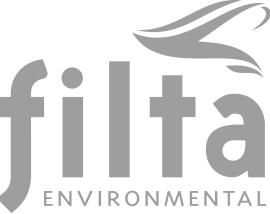With Pirtek centres across the UK and Ireland seeking to diversify their range of hydraulic products and services, new hose and piping applications are key. With new applications come different safety, testing and certification requirements.
As Pirtek Galway and its sister centre in Limerick have sought new business, they have developed their ability to certify the hoses they supply. This has involved significant investment in hardware, software and upgrades to the Pirtek centre to make testing safe.
Over the time they have been testing hoses, Pirtek Galway and Limerick have also invested in the development of their teams to enable them to safely carry out these tests.
Getting started
Getting into hose testing is not to be taken lightly. “It’s not something you’re going to learn in a year. You can’t just go out and buy the best of everything straight away,” says Sean Howard, Managing Director of Pirtek Galway. “You’re better off starting small. Make the mistakes, do it the hard way and eventually you’ll get there. “We started off with small rigs, testing maybe 100 hoses, 200 hoses but that has increased over the years.“If people think they’re going to get into this tomorrow morning, to this standard… well, we had eight years’ experience and customers on the books.”
Audit
Initial auditing of Galway’s knowledge and safety procedures was rigorous. “We went through a stringent audit process here for six months,” says Sean. “We had an auditor who had 15 years’ experience at the Food and Drugs Authority (FDA). “He grilled us from top to bottom and it was the best thing we ever did.
Anyone could come in and audit us now – we’ve done it once, we can do it again. “We had three solid days where all we did was make a hose and test a hose; make a hose and test a hose, all for a five-minute process. “Jim asked question after question and he was great because we had to address his concerns. You don’t learn how to use this overnight.
“You have to build up your experience as well as building up your customer base. There’s no point using this rig (the Resato type SLU) if you’re only testing 20 or 30 hoses a year.”
Marketing
Pirtek Galway’s customer base is evolving. “Hose testing started from us getting into the high-end stuff, Sean says. “Such clients won’t accept hoses without a test certificate for every single one.”
Hose testing may not be for all customers, however, and this affects your marketing, says Sean. “When you say to an average client ‘Your hose is going to cost x or y to test,’ they may see it as not worth it and walk away, so you need to be targeting the right potential customers. “Someone else could test it for less but they may not be doing it properly and they may not be producing the certificates. Without them, it’s worthless.
“We have hydraulic hoses that can’t go into certain places – factories for example – without the correct test certificate.” Demand is increasing for hydraulic hoses, Sean says. “What we’re noticing is that this rigorous attitude is making its way down the food chain.”
Certification and accountability
Hose testing is premised on certifiability and in recent years, the demand for hose certificates has increased. Hoses need to be tested, and this needs to be verifiable, as Sean explains. “This is especially true in the oil, gas and pharmaceutical industries,” he says, “where safety and reliability are crucial and detailed documentation on pressure tests of industrial hose assemblies is required.
“It’s not just testing hoses,” Sean says, “it’s getting them in, tagging, cataloguing, getting them in order and making sure the certificates all match up. “You have to relate the test back to the hose number and the invoice.” Every hose that’s tested is numbered and has its own test certificate. “That’s why we’re etching ferrules with the Pirtek brand and number,” says Sean.
“We populate the certificate with the hose number and work order number. The form shows who tested the hose, the device and the serial number.”
The device must have a calibration certificate in order to produce valid test results. “If you cannot relate the form back to the device serial number, the certificate is null and void. If the calibration certificate is out, you might as well not be testing,” says Sean. “Customers want that verifiable, traceable certificate stating, ‘We certify that this hose has been tested with reference to BS 7751 and ISO 1402’.
These are our bible. Twice the working pressure for 30 seconds. Up in a minute, hold for thirty seconds, down to zero,” Sean continues. “You have to show peak pressures, time durations, dates, serial number, reference number and your hose number and you need a signature. “It took us eight years to get to where we are today,” says Sean. “We started off with small, non-recordable rigs, but as you start moving up the chain, clients want proof.
It doesn’t matter what you do, that proof – the software that provides it – costs money.”






Select a country